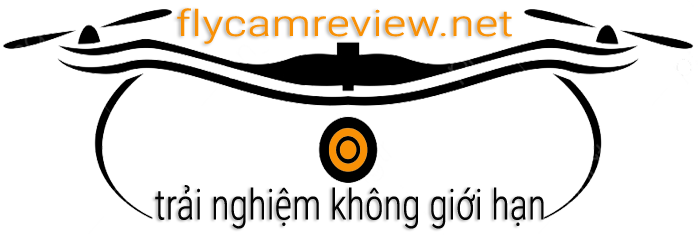Cove lighting, a technique often utilized in interior design, has found its way into the world of cinematography, offering a unique approach to creating subtle and captivating scenes. This technique, which involves concealing the light source and allowing the light to bounce off a surface, can dramatically enhance the mood and atmosphere of a shot. Let’s delve into the nuances of using cove lighting in cinematography, its benefits, and how it compares to other lighting methods.
What is Cove Lighting in Cinematography?
Cove lighting, in its essence, is about indirect illumination. Instead of directly aiming a light source at the subject, it is concealed within a recess, typically a wall or ceiling, and directed towards a reflective surface. This reflected light then gently washes over the scene, producing a soft, diffused glow that minimizes harsh shadows. When applied to cinematography, cove lighting allows for a more nuanced approach to illumination, creating a natural and visually appealing look. This is often used to give a subtle sense of depth and atmosphere, and is not unlike the way many people light their homes, which helps the lighting feel more realistic.
Why Use Cove Lighting in Filmmaking?
The benefits of using cove lighting in cinematography are numerous, but here are some key advantages:
- Soft and Diffused Light: Creates a gentle, ambient glow, eliminating hard shadows and making the subject appear more natural. This is especially beneficial when shooting close-ups.
- Reduced Glare: Because the light source is hidden, glare on reflective surfaces and in the actors’ eyes is significantly reduced, leading to a cleaner, more appealing shot.
- Enhanced Mood: The subtle, indirect light creates a calm and peaceful ambiance, which can be very effective for setting the mood of the scene.
- Aesthetic Appeal: Cove lighting adds a touch of elegance and sophistication to the scene, enhancing the overall visual aesthetic of the film or video.
- Depth and Dimension: Using indirect lighting to highlight architectural elements can enhance the sense of depth and dimension in a scene, making it visually more interesting.
Cove Lighting vs. Direct Lighting
When choosing between cove lighting and direct lighting, there are crucial differences to consider. Direct lighting, achieved by aiming a light source directly at the subject, can result in sharp, defined shadows, which can sometimes be too harsh or unflattering. On the other hand, cove lighting softens these shadows, producing a more natural, pleasing appearance. Let’s take a closer look in the following comparison table:
| Feature | Cove Lighting | Direct Lighting |
|---|---|---|
| Light Quality | Soft, diffused, ambient | Hard, directional, can create sharp shadows |
| Shadow | Minimal, soft shadows | Strong, defined shadows |
| Glare | Reduced due to indirect light | Can be problematic, especially on reflective surfaces |
| Mood | Calm, serene, elegant | Can be harsh, dramatic, or even stark |
| Applications | Interiors, mood setting, subtle scenes | Drama, action, product highlight, high contrast |
| Control | More complex, requires careful placement | Easier to control direction and intensity |
As you can see, the two lighting techniques have very different strengths and weaknesses, so the choice between them really depends on the goals of the shot.
“Cove lighting is a game-changer for cinematographers looking to create a more natural, immersive, and aesthetically pleasing atmosphere. It’s about letting light be felt, not just seen.” – Adrian Sterling, Cinematography Consultant
How to Use Cove Lighting Effectively in Cinematography
Mastering the art of cove lighting involves more than just hiding the light source. Here’s how you can use it effectively:
- Choose the Right Light Source: Consider using LED strips or panels for their energy efficiency and color temperature control. This will also give you more flexibility in installation.
- Proper Positioning: Ensure the light source is completely hidden from view, aiming towards a reflective surface for even light distribution. This can take time to dial in and adjust.
- Adjust Intensity: Fine-tune the intensity of the light to match the desired mood and scene requirements. Dimming the lights can produce a more intimate setting.
- Utilize Reflective Surfaces: Experiment with different reflective surfaces like walls, ceilings, or even specific materials to achieve the desired lighting effects.
- Combine with Other Lighting Techniques: Don’t be afraid to complement cove lighting with other light sources to create depth and highlight specific elements.
Overcoming Challenges of Cove Lighting
Despite its benefits, cove lighting also presents unique challenges:
- Complex Installation: It requires careful planning and execution, including hiding the light source and ensuring it reflects properly.
- Limited Control: The indirect nature of cove lighting can make it more challenging to control the direction and intensity of light compared to direct lighting.
- Potential for Uneven Light: If the cove is not designed correctly, or if there are irregularities in the surfaces, it can result in uneven light distribution.
However, these challenges can be overcome with careful planning, precise execution, and experimentation.
When is Cove Lighting Most Effective?
Cove lighting is particularly useful in certain situations:
- Interiors: It’s ideal for shooting scenes indoors, creating a natural, soft glow that mimics daylight.
- Mood Setting: Use it when you want to create a sense of calm, romance, or intimacy.
- Subtle Drama: Cove lighting can add a layer of subtle drama to a scene without being overwhelming.
- Background Enhancement: The lighting technique can be perfect for enhancing the background without pulling focus from the main action.
Cove Lighting and Color Temperature
Color temperature is crucial when using cove lighting. The color of the light can dramatically affect the mood and tone of the scene. Warm tones (around 2700K-3000K) can create a cozy and intimate atmosphere, while cooler tones (around 4000K-6500K) can create a more modern and crisp feel. Experiment with different color temperatures to achieve the desired visual effect.
Practical Applications of Cove Lighting in Film
Let’s look at some real-world examples:
- Romantic Scenes: Cove lighting can create a soft, warm glow that’s perfect for romantic moments.
- Intimate Conversations: It’s great for scenes where characters are having close, intimate conversations.
- Dreamlike Sequences: The diffused light of cove lighting can give dream sequences a magical, ethereal quality.
“The power of cove lighting lies in its ability to enhance the atmosphere of a scene without drawing attention to itself. It’s a subtle art, but when done right, it’s incredibly powerful.” – Isabella Rossi, Director of Photography
Key Takeaways on Cove Lighting
Cove lighting offers filmmakers a versatile tool for creating soft, atmospheric lighting. While it does require more meticulous planning and placement than direct lighting, the results can be very impactful, creating subtle, natural light that can enhance the mood and ambiance of the scene. By understanding how to manipulate this technique, cinematographers can achieve visually compelling and aesthetically pleasing results. Remember, experimentation is key in mastering the art of cove lighting.
FAQ
Q: What is the main benefit of using cove lighting in cinematography?
A: The primary benefit is the creation of soft, diffused light that minimizes harsh shadows and reduces glare, leading to a more natural and pleasing visual appearance for the shot.
Q: Can cove lighting be used in all types of scenes?
A: While versatile, cove lighting works best for interior scenes where you want to create a calm, subtle mood. It may not be ideal for high-contrast, dramatic scenes.
Q: What types of light sources are suitable for cove lighting?
A: LED strips or panels are ideal for cove lighting due to their energy efficiency, color temperature control, and ease of installation, which allows for flexibility in positioning and use.
Q: Is cove lighting more difficult to work with than direct lighting?
A: Yes, cove lighting can be more complex due to the need for precise placement and careful reflection, while direct lighting is easier to control in terms of intensity and direction.
Q: How can I control the color temperature in cove lighting?
A: You can use light sources that allow for adjustable color temperature or apply color gels to achieve the desired warm or cool tone for your scene.
Q: What are the main challenges of cove lighting?
A: The main challenges include complex installation, limited control over light direction, and potential for uneven light distribution, requiring careful planning to overcome.
Q: Can I use cove lighting in combination with other lighting techniques?
A: Absolutely. Combining cove lighting with other light sources can add depth and dimensionality to your scene, and can highlight key elements more effectively.
Explore Related Content
To further your understanding of cinematography lighting techniques, be sure to check out our article on best cinematography schools in europe. You may also find resources on cinematography jobs near me if you’re looking for more work in the field.
Also, check out the resources at american cinematography magazine to learn more about innovative ways to approach your lighting. For an interesting example of a unique cinematic style, explore how lighting is used in fantastic mr fox cinematography. To learn more about the technical aspects of lighting, check out blain brown cinematography.
The Evolution of Cinematic Technology and Flycam
The history of cinema is intertwined with technological advancements. From the first clunky cameras to sophisticated digital imaging, the technology has constantly pushed boundaries. The rise of computer graphics, AI, and the development of high-performance smartphones with advanced camera capabilities has revolutionized how films are made. In parallel, the evolution of flycam technology, often referred to as drones with cameras, has provided cinematographers with a new perspective. Flycam Review is committed to providing reviews and information on the latest technology from these fields.



